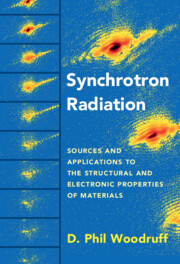 Synchrotron Radiation
Synchrotron Radiation Book contents
- Synchrotron Radiation
- Synchrotron Radiation
- Copyright page
- Contents
- Preface
- Abbreviations and Acronyms
- 1 Introduction
- 2 Synchrotron Radiation Sources
- 3 Getting the Light to the Sample
- 4 Crystalline Structural Techniques
- 5 Local Structural Techniques
- 6 Probes of Electronic Structure
- 7 Probes of Vibrational Structure
- 8 Imaging and Micro/Nano-Analysis
- References
- Index
8 - Imaging and Micro/Nano-Analysis
Published online by Cambridge University Press: 24 September 2021
- Synchrotron Radiation
- Synchrotron Radiation
- Copyright page
- Contents
- Preface
- Abbreviations and Acronyms
- 1 Introduction
- 2 Synchrotron Radiation Sources
- 3 Getting the Light to the Sample
- 4 Crystalline Structural Techniques
- 5 Local Structural Techniques
- 6 Probes of Electronic Structure
- 7 Probes of Vibrational Structure
- 8 Imaging and Micro/Nano-Analysis
- References
- Index
Summary
Chapter 8 introduces the use of synchrotron radiation for imaging and micro- and nano-analysis, a field that is of growing importance at modern synchrotron radiation facilities. The methods include transmission microscopy and tomography (using both hard and soft X-rays) and a range of methods providing spatially-resolved spectroscopic information based on photoemission, photoabsorption and X-rayfluorescence. Finally two very different methods based on X-ray diffraction are described, namely the very well-established method of X-ray diffraction topography, but the much more modern technique of coherent X-ray diffraction imaging for 'lens-less' imagingdown to the nanoscopic scale.
Keywords
- Type
- Chapter
- Information
- Synchrotron RadiationSources and Applications to the Structural and Electronic Properties of Materials, pp. 242 - 271Publisher: Cambridge University PressPrint publication year: 2021
